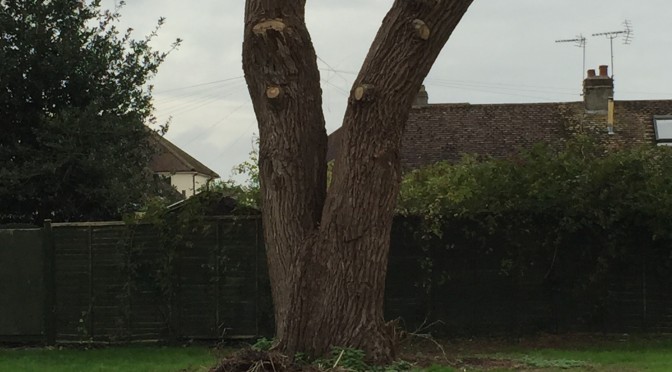Due to recent relaxation of the planning regulations by the current government and the disappearance of some trees for various other reasons, it is not easy to produce a reliable list of the protected trees in and around Westgate. We are therefore grateful to Dr Brian Hopkins, our local tree warden, for the work he has done in identifying those trees that it is possible to place – see our catalogue of Westgate’s Landmark Trees and the proposed Spring Walk.
In common with many parts of Chichester and indeed nationwide, Westgate has its fair share of landmark trees many of which are protected by TPOs (Tree Preservation Orders) in order to safeguard the look of our general streetscape. All trees in Conservation Areas are protected whether they have a TPO or not, with some specifically mentioned under what is known as a TCA, a conservations area tree. Any work to be done on a tree with a TPO or in a Conservation Area therefore requires the property owner to make application for the work through the CDC Planning process (more on this below).
Trees, however, are living organisms and it is true that neither classification is much good at protecting our larger trees from disappearance, whether by deliberate flouting of the rules or by permission – as you will see this Spring when the Horse Chestnut at the end of Parklands Road is taken out.
Tree Preservation Orders (TPOs)
A Tree Preservation Order (TPO) is a part of town and country planning in the United Kingdom. TPOs were originally introduced in the Town and Country Planning Act 1947. Some TPOs therefore are over 50 years old, and still valid – Westgate has some dating from the 60s and 70s. Current Tree Preservation Orders are made under the Town and Country Planning Act 1990 and the Town and Country Planning (Tree Preservation) (England) Regulations 2012.
A TPO is made by a Local Planning Authority (usually a local council) to protect specific trees or a particular area, group or woodland from deliberate damage and destruction. TPOs can prevent the
- felling,
- lopping,
- topping,
- uprooting or
- otherwise willful damaging of trees
without the permission of the Local Planning Authority, although different TPOs have different degrees of protection.
If you are concerned about a tree, these orders can be made actually very quickly, and in practice it is normal for a council to make an emergency TPO in less than a day in cases of immediate danger to trees.
What are a tree owner’s responsibilities?
Owners of protected trees must not carry out, or cause or permit the carrying out of, any of the prohibited activities without the written consent of the local authority. As with owners of unprotected trees, they are responsible for maintaining their trees, with no statutory rules setting out how often or to what standard. The local planning authority cannot require maintenance work to be done to a tree just because it is protected. However, the authority can encourage good tree management, particularly when determining applications for consent under a Tree Preservation Order. This will help to maintain and enhance the amenity provided by protected trees.
Arboricultural advice from competent contractors and consultants, or the authority, will help to inform tree owners of their responsibilities and options. It is important that trees are inspected regularly and necessary maintenance carried out to make sure they remain safe and healthy.
Exemptions
The following works normally do not require permission under any TPO:
- Works approved by the Forestry Commission under a felling licence or other approved scheme.
- Felling or working on a dead or dangerous tree (the onus is on the person who authorises the work to prove that the tree was dead, dangerous – this can cause problems if the tree is felled and removed, as then there is no proof of its condition. Normally this requirement is fulfilled by obtaining a report by a qualified person made before the works are done).
- Where there is an obligation under an Act of Parliament (for example, to maintain a public highway).
- Works at the request of certain agencies or organisations which are specified in the Order.
- Works where there is a direct need to work on the tree to allow development to commence for which detailed planning permission has been obtained
- Works to fruit trees cultivated in the course of a business for fruit production, as long as the tree work is in the interests of that business. This means that fruit trees are not automatically exempt unless they are actively being used for a business.
- Works to prevent or control a nuisance (in the legal sense only).
